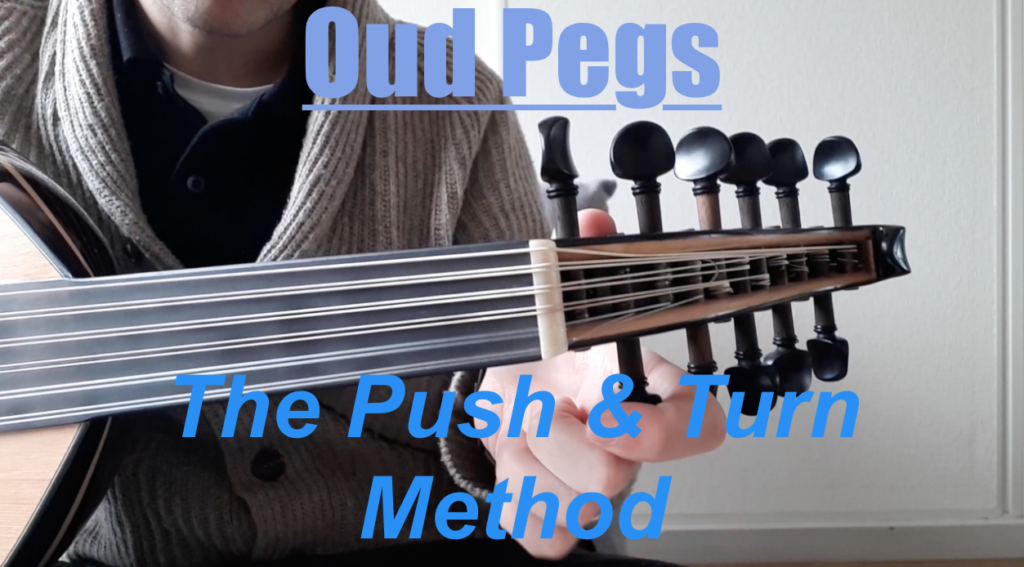I’ve never used any type of peg compound to keep my Oud pegs free from slipping or getting stuck.
Here’s how I get away with it.
1. Be patient, and observe how your Oud pegs react to humidity.
2. Use the push+turn method.
It takes some time for an Oudist to get accustomed to how his/her Oud pegs behave under different humidity conditions.
Nevertheless, you can feel free to push in your pegs as they need to stay secure. You need to find the right balance. They should not be pushed in so much that they get stuck or that you break the peg.
When humidity is low, pegs slip…
When humidity is high, pegs get stuck…
One of my Oud’s pegs is very susceptible to humidity and when the weather is dry the pegs lose moisture and contract causing the peg to become loose and sometimes completely unwinds the string. During these times I have to push the peg in a bit more than usual.
If I push it in too much, then when the humidity increases the peg will swell causing it to get stuck. Since I know how my Oud pegs behave I know exactly how much to push it in and how much to avoid.
You too will gain this knowledge and comfort with your Oud.
Pegs need to have the right balance of tightness and looseness to turn them without them coming completely loose. They need to turn without too much effort, but also be tight enough to keep still.
The Proper way to Push Your Pegs In – The Push and Turn Method
Pushing them in requires proper technique in order to stay put.
Do not simply push the peg in.
You must push the peg while also turning the peg in the direction of tightening the tension of the string.
1. First, loosen a peg 1-2 half-steps in pitch.
2. Hold the oud between your legs with the bottom of the Oud on the ground and the peg box up so you can give the Oud the right support and not put too much pressure on the neck.
3. Tighten the peg by pushing it in and also turning the peg in the direction that tightens the string tension.
4. Now tune the string more precisely to get it in tune.
If you have tightened the string too much during this process, you may need loosen it. If the peg comes loose again, you’ll need to repeat the process until you get the tightness just right.
Do not simply push the peg in, otherwise it will continue to come loose. You need to push in and turn the peg simultaneously in the direction which tightens the string.
Squeaky Pegs
If you have pegs which squeak as you turn them, you can take a pencil and draw on the peg. Take the peg out completely, and draw pencil all over the points which make contact with the peg box holes. The graphite in the pencil is a good lubricant for woods and does not cause any damage.
If you continue to have problems, you can buy some peg compound online or at a music store which some violinists use.
I hope that helps.






